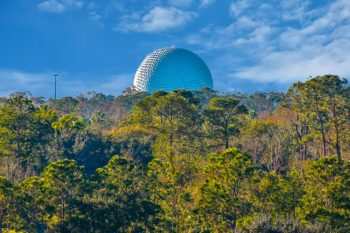
The animal kingdom is a vast and diverse realm, teeming with millions of different species, each with their unique characteristics, behavior, and roles within their ecosystems. However, one question that often arises is, “Who rules the animal kingdom?” The answer is not as straightforward as it might seem.
The animal kingdom does not have a single ruler or dominant species. Dominance is determined by various factors such as resource acquisition, adaptability, reproductive success, and more. Symbolically, the lion is often considered the “king” of the animal kingdom, but this is more of a cultural notion. Different ecosystems have their own ‘rulers’ or keystone species that play a crucial role in maintaining the balance and diversity of their environments.
Understanding the Animal Kingdom
In the animal kingdom, there is no single ruler or dominant species that governs all other animals. Instead, the animal kingdom is organized into a hierarchical classification system based on shared characteristics and evolutionary relationships. These include various levels, such as kingdom, phylum, class, order, family, genus, and species. For example, the order Carnivora includes families like Canidae (dogs), Felidae (cats), and Ursidae (bears).
The Symbolic “Ruler”
Symbolically, the lion is often considered the “ruler” or “king” of the animal kingdom due to its majestic appearance, strength, and top predatory nature. However, this title is more of a cultural and symbolic notion rather than a reflection of any actual hierarchy among animals.
Dominance in the Animal Kingdom
Dominance in the animal kingdom is determined by several factors such as resource acquisition, adaptability, reproductive success, morphological traits, and specialized tissues. For instance, predators like sharks and wolves maintain their dominance through their feeding relationships, controlling the populations of smaller predators and their prey.
Rulers of Different Ecosystems
Within different ecosystems, keystone species often play the role of the “rulers”. These species, like sea stars in marine ecosystems or beavers in freshwater ecosystems, have a disproportionately large effect on their environment relative to their abundance, maintaining the balance and diversity of the ecosystem.
Intelligence and Dominance
Intelligence plays a significant role in the dominance of certain species, allowing them to adapt to various environments, develop complex social structures, and utilize tools and strategies for survival. However, intelligence is not the sole factor determining dominance. Other factors, such as physical traits, social structures, and ecological niches, also contribute to a species’ success.
Impact on the Environment
Animals, especially the dominant ones, play a crucial role in maintaining the balance and health of ecosystems. They contribute to nutrient cycling, seed dispersal, and soil disturbance, among other functions. However, threats like habitat loss, climate change, and human activity can lead to significant declines in wildlife populations, disrupting the balance of ecosystems and threatening biodiversity.
Power Shifts
The balance of power can shift within the animal kingdom under various circumstances. In group-living animals, the pursuit of power affects nearly every aspect of their lives. Power shifts can occur through different mechanisms, such as brute force, inheritance, and consensus.
Conclusion
In conclusion, the animal kingdom does not have a single ruler or governing species. Instead, it is a diverse and complex system of organisms classified based on their shared characteristics and evolutionary relationships. The dominance of certain species is based on various factors, and their roles and impacts on the environment are immense. To maintain the balance of nature and preserve the planet’s biodiversity, it is crucial to implement conservation efforts, sustainable land-use practices, and public awareness campaigns.
Frequently Asked Questions
What is a keystone species?
A keystone species is a species that plays a critical role in maintaining the structure of an ecological community and whose impact on the community is greater than would be expected based on its relative abundance or total biomass.
What are some examples of animals that have high intelligence?
Some examples of highly intelligent animals include dolphins, elephants, certain bird species like crows and parrots, and primates, particularly the great apes such as chimpanzees, bonobos, and gorillas.
What are some of the threats that lead to habitat loss for animals?
Some of the primary threats that lead to habitat loss include deforestation, urban development, agriculture, climate change, pollution, and invasive species.
What is the role of human activity in disrupting the balance of ecosystems?
Human activities can disrupt the balance of ecosystems in several ways, including overexploitation of resources, pollution, habitat destruction, and contributing to climate change, which can alter habitats and force species to migrate or face extinction.
What are some strategies for preserving biodiversity?
Strategies for preserving biodiversity include protecting natural habitats, implementing sustainable land use practices, regulating hunting and fishing, controlling invasive species, and promoting public awareness about the importance of biodiversity.











